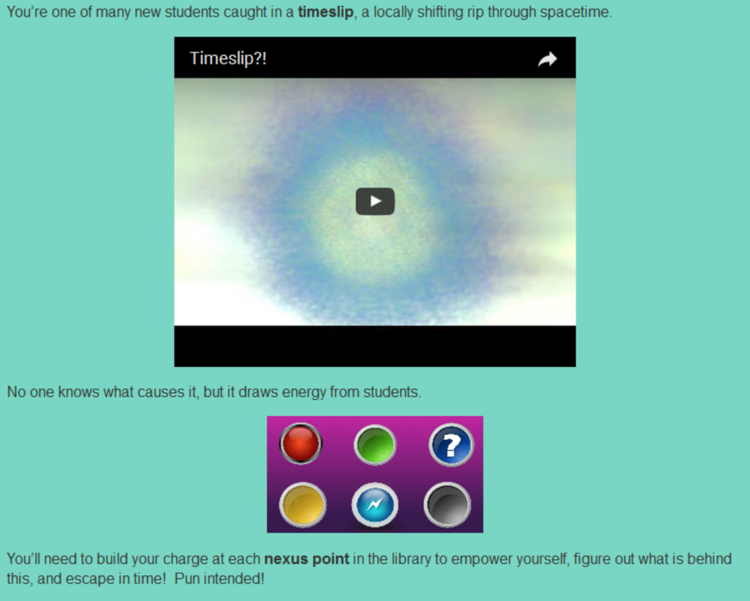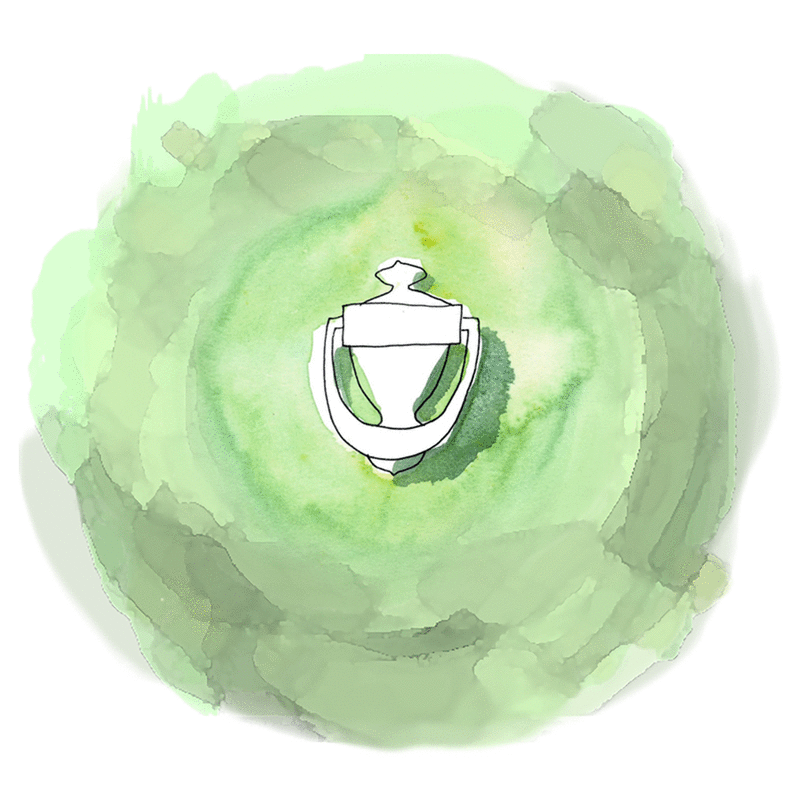With Ian Boucher of North Carolina Wesleyan College!


Q: Tell us about your library and the students you serve (goals for your students, number of students you serve, number of library staff, etc).

North Carolina Wesleyan College’s Pearsall Library serves a small but diverse population of traditional and adult students, at our main campus as well as at branch campuses throughout Eastern North Carolina. We work with the NCWC community to provide relevant resources, activities, and instruction for an engaging library experience of academics and recreation, whether through online articles and books, collaborative spaces, video production equipment, photo editing workshops, Google Cardboard, or critical movie discussions.
Q: What prompted you to build a game for your students?

I started building games for our students so that they could actively apply library concepts to build their understandings, rather than just getting through library instruction. I want our students to feel the value of library resources in their lives, and working through a hypothetical situation in a game is an excellent way to achieve that.
Q: Tell us about your game! (Objectives, outcomes, storyline, timing)
“Erased from FYE” was the first game I designed with Green Door Labs. In this game, students must re-energize themselves to escape from a time warp, using their phones to guide them to actual resources inside the library. Information traditionally covered in a library orientation lecture is converted into a game. Students get into groups and learn about digital and physical library resources, and also get to know each other through icebreaker questions, and the game generally takes a half hour or less. For most questions, students cannot progress without correctly answering them. In addition, there are opportunities for students to provide feedback about their comfort levels in the library, and there is a quiz that they must turn in to their First Year Experience instructors afterward.
Q: What was one of the most surprising things you learned about your students by building a game?
One of the most surprising things I learned about our students was that it was more difficult to encourage them to participate in the group icebreaker activities than I thought. On the other hand, students who helped produce the game before it went live were very creative and had a lot of fun in the process.
Q: What would you change about how you designed and built your game, if anything?
What I would change about how I designed “Erased from FYE” would be to design the orientation in a way that students could use library information to make their own orientation games to teach other students.
Q: Tell us about some of the most significant outcomes of your game.
One of the most significant outcomes of “Erased from FYE” was seeing how a well-structured game can facilitate independent student activities.One of the most significant outcomes of “Erased from FYE” was seeing how a well-structured game can facilitate independent student activities.
Q: What are some upcoming goals for your library and some ideas on how to tackle them?
An upcoming goal of mine is to work with NCWC faculty to integrate an asynchronous online game that I designed for free using Office Mix into their courses, in order to provide students with an engaging introduction to finding a scholarly, peer-reviewed journal article at any campus and on any schedule. The game includes a built-in quiz. I will likely begin with a few courses and participate in the grading process.

Leave a Reply